International Journal of Aquaculture and Fishery Sciences
A Study on the Specific Growth Rate (SGR) at Different Stages of Tilapia (Oreochromis niloticus) Production Cycle in Tank Based Aquaculture System
Md. Hashibur Rahman1*, Mohammad Mahfujul Haque2, Mohammad Ashraful Alam3 and Flura3
2Department of Aquaculture, Bangladesh Agricultural University, Mymensingh, Bangladesh
3Bangladesh Fisheries Research Institute, Riverine Station, Chandpur, Bangladesh
Cite this as
Md. Hashibur Rahman, Haque MM, Alam MA, Flura (2022) A Study on the Specific Growth Rate (SGR) at Different Stages of Tilapia (Oreochromis niloticus) Production Cycle in Tank Based Aquaculture System. Int J Aquac Fish Sci 8(2): 059-065. DOI: 10.17352/2455-8400.000079Copyright License
© 2022 Md. Hashibur Rahman, et al. This is an open-access article distributed under the terms of the Creative Commons Attribution License, which permits unrestricted use, distribution, and reproduction in any medium, provided the original author and source are credited.The conventional assessment of the specific growth rate (SGR) avoiding intermediary data is highly criticized by scholars as to the data of the beginning and the end of the production cycle usually considered for the measurement. To evaluate the SGR, the study was conducted in six concrete tanks under an outdoor laboratory shed from 10th May to 29th July 2017. Tilapia (Oreochromis niloticus) fry was released at the rate of 8 fries per tank as per the recommended stocking density of 320 fishes/decimal in an intensive aquaculture system. To evaluate the experiment, sinking and floating feeds as treatment 1 (T1) and treatment 2 (T2) were used for feeding the fish, respectively. There were three replications for each treatment. During the experimental period, the feed was supplied at the rate of 20%, 15%, and 10% of the body weight in the 1st, 2nd, and 3rd months, respectively. The daily ration of fish was divided into two parts and delivered to fish in the morning and in the evening. Aeration facilities were installed for 24 hours using an air stone aerator. Digital balance was used for measuring the weight of fish in 3 days intervals to assume the trend of SGR while a customized scoop net was used to sample the fish minimizing the stress on the fish. The weight gains of fish were 126.08±5.65 and 132.23±1.29 for T1 and T2, respectively. The mean percent weight gain was found higher in T2 (1715.03±0.00) than in T1 (1639.43±0.00). Feed conversion ratio (FCR) in T1 and T2 were 1.97±0.11 and 2.13±0.18, respectively. The specific growth rates (SGR) of tilapia in T1 and T2 were 4.90±3.03 and 4.98±2.28 considering the data at the beginning and the end of the production cycle, respectively. However, the SGR for floating feed was higher at the initial stage of the production cycle and lower in the later stages. The SGR was almost static for sinking feed from the beginning to the end of the experimental period. The higher FCR in T2 was correlated with the lower SGR in the later stage of the culture period. This ascertains that the pre-determined required amount of feeding ration imparted by the farmers in case of floating feed which wastes the high-cost feed and money. Higher total production was obtained in T2 (1119.52 g) than in T1 (1070.19 g) with 100% survival in both treatments. Therefore, determining SGR in a specific interval might be a useful tool at the farmer’s level.
Introduction
Aquaculture is the fastest-growing animal-based food-producing sector, particularly in developing countries like Bangladesh and its production contributes to the livelihoods, and employment and also meets the demand in terms of a protein supply, food security, and income generation of the increasing number of people throughout the world [1]. Fish is the second most important agricultural produce in Bangladesh and contributes a significant role in foreign exchange earnings, nutrition supply, and our national economy and is usually considered one of the most promising resources of animal proteins. The contribution of the fisheries sector in 2019-20 was 3.50% to the total GDP of the country and approximately 25.72% to agricultural GDP [2]. Nowadays, fish production shifting to aquaculture as inland fisheries production has escalated over the years, but the productivity per hectare of water area is not yet attained its optimum [2]. Among various segments of the fisheries sub-sector, the inland aquaculture has generally experienced the fastest growth, particularly in the pond and tank-based aquaculture, entirely over the country.
In the 21st Century, water resources will be at a premium with water shortages by 2025. With such pressure on this vital resource, the intensification of fish culture will be time demanded arena for producing the required number of fish with the increasing population. This method of culture will ameliorate to development of the fisheries sector in the new millennium. In Bangladesh, in the case of fish culture besides an extensive system conventional semi-intensive aquaculture system is generally followed. The competition between aquaculture and other agricultural sectors is increasing day by day. Therefore, in the context of population growth and declining land resource-intensive aquaculture is growing to enhance national fish production. To fulfill the animal protein demand of the growing population in Bangladesh intensive fish culture system may be alternative to enhance fish production since fish contributes about 60% of animal protein to our daily food [2]. The tank-based aquaculture can be an effective way of overcoming the problem of water shortages by producing more fish in a small parcel of land.
In this study, to achieve the expected result more accurately the stocking density was adjusted to an intensive (320 fish/decimal) aquaculture system. Assessing the amount of feed required in percentage increase in size and weight at a particular growth stage about time (SGR) is very important. Commonly used SGR calculating equation considers the initial and final weight, so the result is not accurate enough to understand the growth of fish in the intermediary stages [3]. Therefore, the growth of fish at a different stage in relation to water quality parameters in intensive farming is likely to be effective to develop a relationship between water quality parameters. The study was carried out in an intensive aquaculture system in tanks feeding with sinking and floating feed to assess the growth and production of tilapia and to determine the specific growth rate (SGR) of tilapia focusing on different intermediate sampling stages. This study also aimed to increase Tilapia production through the intensification of cultural techniques within a short period of time. Therefore, this technique of intensive fish culture will assist the marginal fish farmers to acquire their anticipated profits from a small parcel of land as well as the bountiful production of fish will be perpetrated.
Materials and methods
Experimental site
Twelve concrete-made squared-shaped tanks under a properly constructed shed were established in the backyard (south of the wet laboratory complex) of the Faculty of Fisheries, Bangladesh Agricultural University (BAU), Mymensingh. The water supply and exchange facility were also satisfactory there. Each tank is of length 1m, a width of 1m, and a depth of 1.2 m and the water volume in each tank was 1 ×1 × 1 =1m3. Among the twelve tanks, six tanks were used to study the growth and production, particularly the specific growth rate (SGR) of tilapia in intensive rearing in concrete tanks. The study was carried out from 10th May to 29th July 2017. Tilapia was fed with floating and sinking feed to have a better understating of SGR in different types of feeding practices because farmers used both types of feed depending on their economic affordability Figure 1.
Experimental tanks
For conducting the experiment, six concrete tanks were used. The bottom of the tank was made smooth and coated with white cement to mak the bottom visible and facilitate the cleaning process easily. The outlet pipes of the tanks were closed to prevent water leakage. The siphoning process was followed to clean the tanks. Water was supplied from a deep tube well located near the experiment site.
Experimental design and layout
Mono sex male tilapia (O. niloticus) fry were used as experimental species. For the experiment, two treatments were designed namely T1 (Sinking Feed) and T2 (Floating Feed) and there were three replications for each. The first three tanks of T1 were treated with sinking feed and the remaining three tanks of T2 with floating feed. Fry has been released at the rate of 8 fries per tank that equivalent to the stocking density of 320 fish per decimal or about 80,000 per hectare with different average initial weights for six tanks individually.
Selection of feed and feeding frequency
The fishes were fed by two types of feed. Sinking and floating types of commercial pellet feed named ‘Quality Feed’ were used. The proximate composition of two different types of feeds is shown in Table 1. In the first 30 days of the experiment, the size of floating feed used for feeding the fish was 0.25 mm. Then the pellets of 0.5 mm were used to feed the fish during the rest experimental period. During the experimental period feed was given at the rate of 20%, 15%, and 10% of the body weight in 1st, 2nd, and 3rd month, respectively.
Aeration installation
Air stone aerators were applied to provide sufficient oxygen powered by electricity. A single air stone was allocated for each tank. The aerator motors were attached to the main structure of the roof of the shed. Aeration in intensive culture is required for better production and to make the culture technique compatible as the high stocking density is practiced in this culture technique [4]. The aeration was operated for 24 hours during the experimental period.
Study of growth parameters of fish
For evaluating the growth of fish, different growth parameters such as length gain (cm), weight gain (g), percent (%) weight gain, specific growth rate (SGR % per day), and production (kg/ha/100 days) were taken into consideration and were measured using the following formula [5]. The length and weight of fish were measured using a centimeter-scale and electric balance (Model; HKD-620AS-Led) in grams.
Weight gain (gm) =Mean final weight (gm) – Mean initial weight (gm)
Percent (%) weight gain =
SGR (%) per day =
Production = No. of fishes harvested × average final weight increases of fishes
Study of water quality parameters
During the experimental period, water quality parameters of the experimental tanks were recorded very intensively two times daily. Water quality parameters especially temperature, DO, and pH was measured in the morning and afternoon daily and all the tests were performed in the experimental shed. Different physio-chemical parameters including DO were measured using a digital DO meter (Model: CE 225908) in mg/l. Water temperature was measured by using a digital thermometer (model: CE 225908) in oC and pH was recorded by a digital pH meter (Model: CE 224469).
Data analysis
Collected fish growth and water quality data were recorded in MS Excel 2010. Statistical analysis was done to evaluate the effect of the two treatments (sinking and floating feed) on whether the growth of fish was significant or not. An Independent sample T-Test was performed to test the significance of difference among different water quality parameters. The entire statistical test was conducted by using SPSS (Statistical Package for Social science) version 16. The graph was prepared by using both MS Excel and SPSS.
Results
Fish growth performance
Final weight: The initial weight of individual tilapia was 7.69±0.19g and 7.71±0.19g for T1 and T2, respectively. The final mean weight of each fish was 133.77±5.65g for T1 and 139.94±1.29 for T2, respectively with no significant difference (p < 0.05) between the treatments.
Weight gain: This controlled experiment was conducted to assess the growth of tilapia frequently at 3 days intervals. In this study, the average weight gain of tilapia for T1 was 126.08±5.65 g and for T2 was 132.23±1.29 g, respectively. The difference in weight gain is notably remarkable between the two treatments. The weight gain of tilapia was higher in T2 than in T1. This frequent observation was performed to find out where the maximum growth was taking place in the production cycle of two different feeding systems. In terms of weight gain, in most sampling stages, the performance in T2 was significantly (p < 0.05) higher than in T1. In terms of growth trend, after about a month, a different trend of weight gain was observed. The higher weight gain in T2 was observed from the 5th sampling. However, it was a remarkable increment of growth after about a month (Sampling stage 7, Figure 2).
Percent weight gain (%): The mean percent weight gains of fishes were 1639.43±0.00 and 1715.03±0.00 for the treatments T1 and T2 (Figure 3). The higher percent weight (1715.05%) was found in T2 where fishes are fed floating feed and lower (1639.53%) was in T1 fed with sinking feed.
Specific growth rate (SGR % per day)
The specific growth rates (SGR) of tilapia in T1 and T2 were found 4.90±3.03 and 4.98±2.28, respectively (Figure 4). There was no significant difference (p>0.05) in terms of SGR between the treatments. The present study aimed to reveal the points of specific growth rate (SGR) in different stages of the growth of tilapia more frequently which are generally not determined considering the initial and harvesting weight data, and the intermediate data are excluded in the calculation and intermediate the specific growth rate trend remains poorly understood. For this reason, the fishes were sampled at 3 days interval to gain the weight of fish to determine the SGR at a particular point of growth more specifically. In this regard, in the first month, the SGR of T2 was found higher than that of T1. The SGR of T1 was shown to increase gradually. After that, at the last sampling stage, the average trend of SGR was observed (Figure 5). More specifically, the significantly higher specific growth rates were observed at the middle stage (In between 4th June and 11th June) of the experiment and also in later stages in the case of floating feed-fed tilapia (Table 2 and Figure 5).
The SGR at the initial stage started from the higher range in T2 compared to T1 (Figures 6,7).
Feed conversion ratio (FCR)
The feed conversion ratio was calculated by taking the total feed used into consideration in the experiment. Feed conversion ratio values of sinking and floating feed used for feeding the fish in T1 and T2, respectively were 1.97±0.11 and 2.13±0.18 (Figure 8).
Total production (g/m3)
The total productions of tilapia at the end of the study were 1070.19±0.00g and 1119.52±0.00g per cm3 in T1 and T2, respectively (Figure 9). The production was higher in the tanks fed by floating feed (T2) than that fed by sinking feed (T1).
Water quality parameters
The mean values of tested water quality parameters such as temperature and DO of the experimental ponds are presented in Table 3. There was no significant difference (p<0.05) in the temperature in the morning and evening in both treatments. The difference in dissolved oxygen content was very low between the two treatments. The dissolved oxygen contents in both treatments were similar because aerators were installed in all the tanks.
Discussion
In this present study, the fishes are fed with sinking feed and floating feed in T1 and T2, respectively. A difference in weight gain was found between the treatments. The mean initial weight of the T1 was 7.69±0.16 and 7.71±0.15 in T2. At the end of the experiment, the mean weight of the fish in T1 was 133.77±5.65 and in T2 139.94±1.29. The mean weight gain was 126.08±5.65 and 132.23±1.29 in T1 and T2, respectively. The weight gain was higher in T2 which might be because fish had taken more amount of floating feed than sinking feed in almost similar level of water quality [6].
The specific growth rate of tilapia in intensive tank aquaculture systems was the main fact of interest in the present study. Usually, intermediate growth data are not considered to assess the specific growth rate and are calculated using the data of initial and final weight only. Therefore, the important stages of the growth of fish are not feasible to understand the trends properly. To avoid this gap, the weight of fish was taken after 3 days interval in this study. The mean value of SGR in T1 and T2 were 4.90±3.03 and 4.98±2.28, respectively. From the research findings, the specific growth rate was higher in T2 than in T1 in the first 30 days (around) and SGR was increased simultaneously in the middle stage of the experiment. The SGR of tilapia in T1 was initially lower than in T2 and the value decreased with the culture period in a regular fashion. The lowest value of SGR in T1 was recorded between 4th and 11th June (Figure 7) and at the end of the experiment, the trend line of SGR was observed to elevate. On the other hand, the value of SGR in T2 was higher in the first stages of the growth than in T1. Then it was decreasing in trend and started falling rapidly from the 3rd sampling stage (Figure 7). The trend line showed a downward direction at the end of the experiment for both of the treatments. It could happen due to particular stages of weight gain; the fish did not like to make floating feed. However, it required further research for a long duration in different seasonality to unpack the fact. Overall, it could be argued that the use of floating feed in tilapia farming is more effective in the early stage than sinking feed.
Feed conversion ratio (FCR) was calculated to evaluate the utilization of feed that was given to the fish. The expected FCR for tilapia ranges from 1.5 to 2.0 [7]. The FCRs of tilapia in the present study were 1.97±0.11 and 2.13±0.18 in T1 and T2, respectively. The FCR in T2 was found higher than in T1, but the FCR in T1 was within the accepted range. In this experiment, the feed was given following the general method of body weight percentage consideration, not considering the satiation level. For this, the supplied feed remains unused and as a consequence, the feed conversion ratio (FCR) of T2 was higher than the expected level as the total amount of delivered feed was taken into consideration during calculating the FCR. This higher FCR in T2 found in the case of a pre-determined feeding system (not satiation level) correlates with the findings of lower SGR in the later of the culture period. This further confirms that farmers using floating feed with a pre-determined estimation of the required amount of ration derived from percent body weight, waste the high-cost feed and money. Therefore, the calculation of SGR at a certain interval in a production cycle is a very critical issue. Calculation of traditional SGR using the data at the beginning and end of the culture period, weight gain, and FCR do not indicate the efficient and economic use of feed and production of fish. Therefore, determining SGR in a specific interval of at least 15 days interval might be usual to obtain accurate data during the experiment [8].
The survivability of tilapia in the present study was 100%. Hussain, et al. [9] recorded survival rate of tilapia ranged from 82 to 90%. In this study, the highest survivability might be the cumulative result of good water quality parameters due to weekly water exchange, quality feed uses, and proper maintenance during culture. This result of 100% survival in both the treatments confirms that indoor tank-based aquaculture systems can be developed in Bangladesh where land is getting scarce natural resources.
The mean total production per m3 was 1070.19 g and 1119.52 g in T1 and T2, respectively. The production was higher in T2 than in T1. Rana [10] recorded the production of tilapia (O. niloticus) at the rate of 28MT/ha/100 days in the pond. In the present study, the production was lower than the finding of Rana [10] if the culture area of the tank corresponded to the hectare. The fact for lower production might be that the fish were sampled frequently at 3-day intervals which causes little disturbance in taking feed that may affect the growth of tilapia [4].
The average value of temperature in T1 was 27.16 ±1.46 and 27.23±1.58 during morning and evening, respectively. In T2, the mean temperature was 27.31±1.45 and 27.41±1.57 in the morning and evening, respectively. Rahman, et al. [11] reported that the body temperature of fish is influenced by the temperature largely. Verdal, et al. [12] reported that water temperature plays a vital role in regulating the metabolic process of fish. Therefore, it is crucial to maintain the temperature of the fish culture unit. The suitable range of tilapia culture is 26 to 320C [13]. The water temperature of the experimental tanks was found propitious for the culture unit.
Dissolved oxygen concentration is an important water quality parameter that affects the growth and survival process of fish. Reduction in dissolved oxygen content has negative effects on growth, reproduction, and other biological activities of fish, and very low dissolved oxygen content is lethal to fish. In the present study, the mean average oxygen content of T1 was 6.85±0.85 and 6.58±0.82 during morning and evening, respectively. In T2, the mean dissolved oxygen content was 6.76±0.83 and 6.57±0.79 in the morning and evening, respectively. Tilapia can survive at very low dissolved oxygen content. Dan and Little [14] reported that tilapia can tolerate dissolved oxygen concentrations as low as 0.1 mg/l. A higher level of dissolved oxygen concentration was recorded in the experimental tanks as a result of aerator installation [15,16].
The present study aimed to find out the crucial points in the growth of fish and to adjust the right amount of required quality feed to reduce the wastage of feed. If the wastage can be reduced the water quality of culture systems will also be improved. At the same time, the cost of feed will be also minimized at the farmer’s level.
Conclusion
Aquaculture production largely depends on the amount of feed utilized by the fish. For producing a high number of fish, it is important to maintain water quality parameters and select of right quality feed for feeding the fish. Therefore, fish should be delivered the required amount of feed-in different growth stages. It reduces the feed cost and at the same time reduces wastage. This reduces the chances of water quality deterioration. The proper amount of feed needed for the fish in different stages of growth can be calculated by knowing the specific growth rate (SGR). Overall, this study suggests that tank-based aquaculture can be developed in an indoor system that can ensure 100% survival. This study also indicates that tilapia farmers in Bangladesh practicing inefficient feeding systems waste high-cost floating feed due to a lack of proper knowledge on the specific growth rate at different stages of fish growth and production. This study reveals an outstanding clarification on the specific growth rate (SGR) of fish in different sampling stages and thus the wastage of feed at the final stages of the culture period can be retarded due to the proper demonstration of feed.
- Haque MM, Sultana T, Salam MA, Alam MM. Effect of aeration on growth and production of fish in intensive aquaculture system in earthen ponds. MS Thesis, Department of Aquaculture, Bangladesh Agricultural University, Mymensingh. 2016.
- DoF. Jatio Matshya Saptaho Shankalan, Department of Fisheries, Ministry of Fisheries and Livestock, Dhaka, Bangladesh. 2020; 144-145.
- Lugert V, Georg T, Jen T, Carsten S, Joachim K. A review on fish growth calculation: multiple functions in fish production and their specific application. Reviews in aquaculture. 2016; 8: 30-42.
- Rahman MH, Arifuzzaman M. An Experiment on Growth Performance, Specific Growth Rate (SGR) and Feed Conversion Ratio (FCR) of Rohu (Labeo rohita) and Tilapia (Oreochromis niloticus) in Tank Based Intensive Aquaculture System. 2021.
- Rahman MH, Islam MN. Sinking Feed Efficiency in Growth Performance, Feed Conversion Ratio (FCR) and Yield of Tilapia (Oreochromis niloticus) at Different Stocking Densities. Asian Journal of Fisheries and Aquatic Research. 2021; 14(5): 1-26.
- Alam MN. Effect of stocking density on the growth and survival of Mono-sex Tilapia (Oreochromis niloticus) fry (GIFT strain) in hapa. MS Thesis. Department of Aquaculture, BAU, Mymensingh. 2009; 42.
- Watanabe WO, Losordo TM, Fitzsimmons K, Hanley F. Tilapia production systemin the Americas: technical advances, trends and challenges. Reviews in Fisheries Science. 2002; 10(3-4):465-498.
- Romano N, Wing-Keong Ng. A review of the nutrition and feeding management of farmed tilapia throughout the culture cycle. Reviews in Aquaculture. 2013; 5(4): 220-254.
- Hussain MG, Rahman MA, Akhteruzzaman M. A study on the production of O. niloticus (Linnaeus) under intensive system in Bangladesh. Bangladesh J. Fish Res. 1987; 1(2): 19-23.
- Rana KMS. Development of black solider fry larve rearing technique to supplement fish feed, MS Thesis, Department of Aquaculture, Bangladesh agricultural University, Mymensingh. 2014.
- Rahman MH, Arifuzzaman M. Impact of Floating Feed on Growth Performance, Yield and Survival of Rohu (Labeo rohita) and Tilapia (Oreochromis niloticus) in Tank Based Intensive Aquaculture System. International Journal of Biological Innovations. 2021; 3(2): 297-305.
- de Verdal H, Vandeputte M, Mekkawy W, Chatain B, Benzie JAH. Quantifying the genetic parameters of feed efficiency in juvenile Nile tilapia Oreochromis niloticus. BMC Genet. 2018; 19: 105.
- Khan S, Hossain MS, Hossain MM. Production and economics of GIFT strain of tilapia (Oreochromis niloticus) in small seasonal ponds. Progressive Agriculture. 2008; 19(1): 97-104.
- Dan NC, Little DC. The culture performance of monosex and mixed-sex new-season and overwintered fry in three strains of Nile tilapia Oreochromis niloticus in northern Vietnam. Aquaculture. 2000; 184: 221-231.
- Losordo TM, Massar MP, Rakocy J. Recirculating aquaculture tank production systems. A review of component options. Publication # 453, Southern Regional Aquaculture Center, Mississippi State University, Starkville, Mississippi. 1998.
- Saha DC. Determination of suitable monoculture technique for GIFT in the Northern Region of Bangladesh, MS Thesis, Department of Fisheries Management, Bangladesh agricultural University, Mymensingh. 2004.

Article Alerts
Subscribe to our articles alerts and stay tuned.
 This work is licensed under a Creative Commons Attribution 4.0 International License.
This work is licensed under a Creative Commons Attribution 4.0 International License.
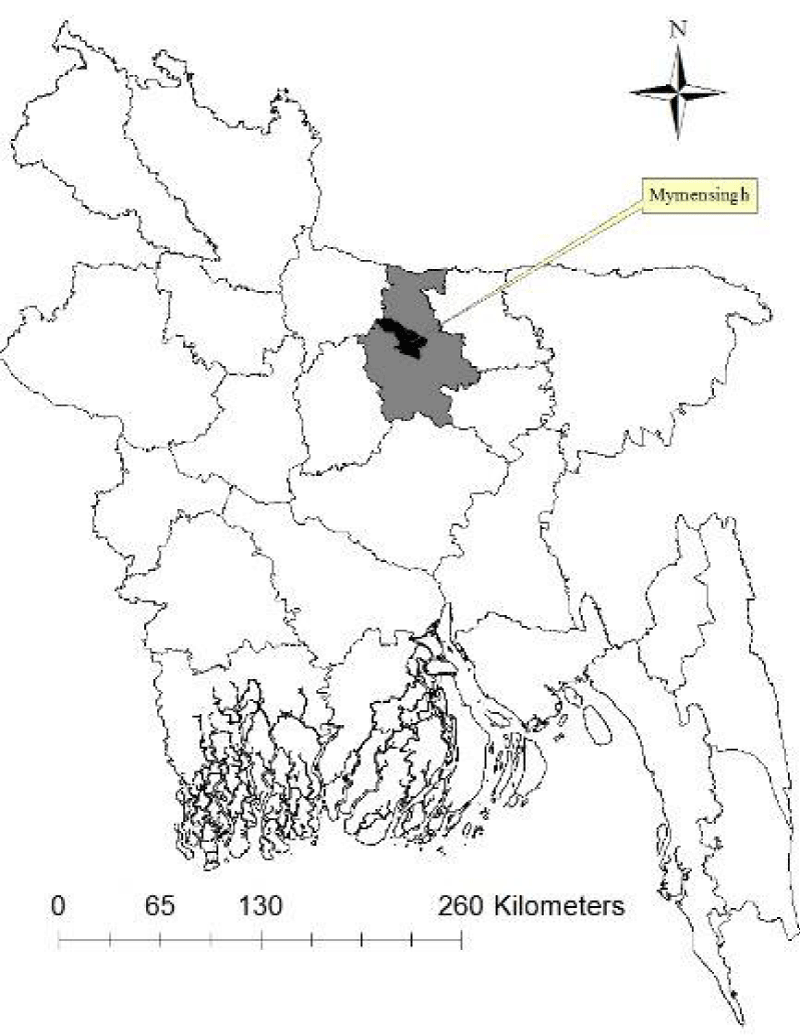

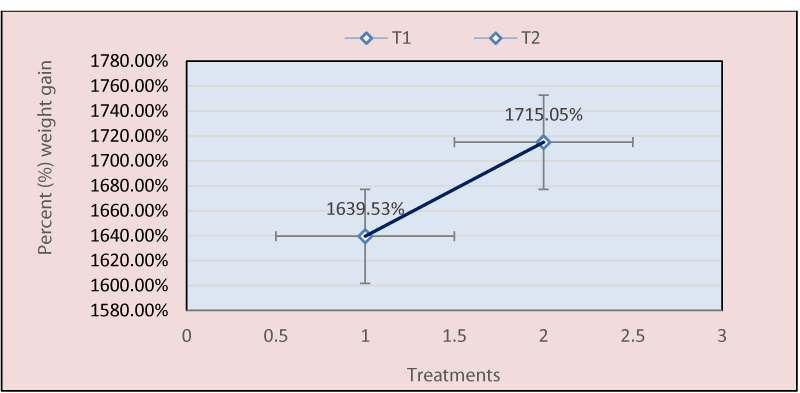

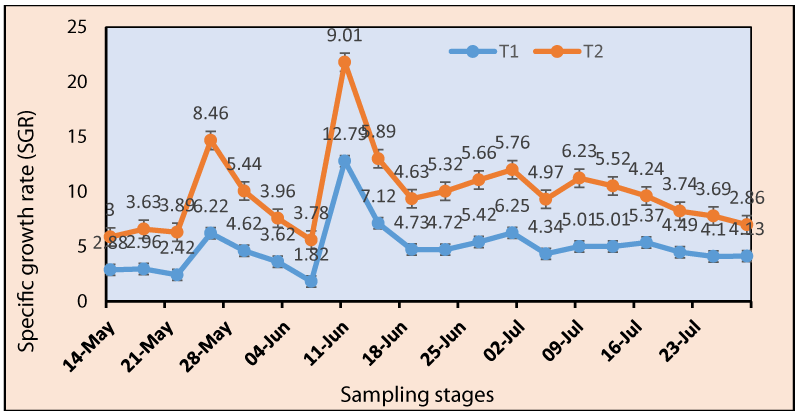

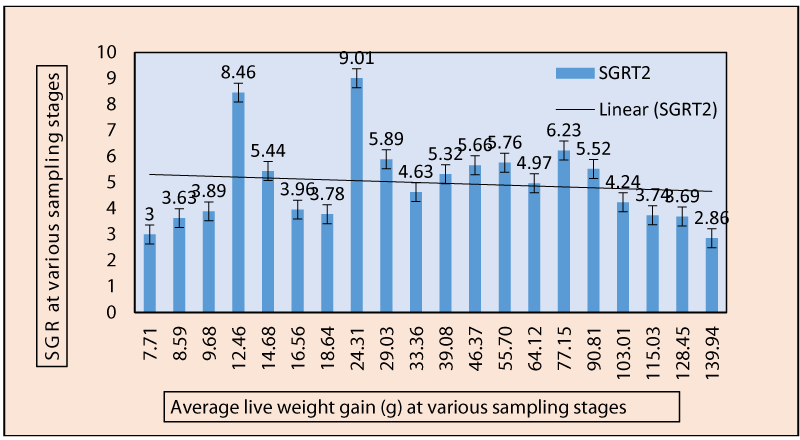
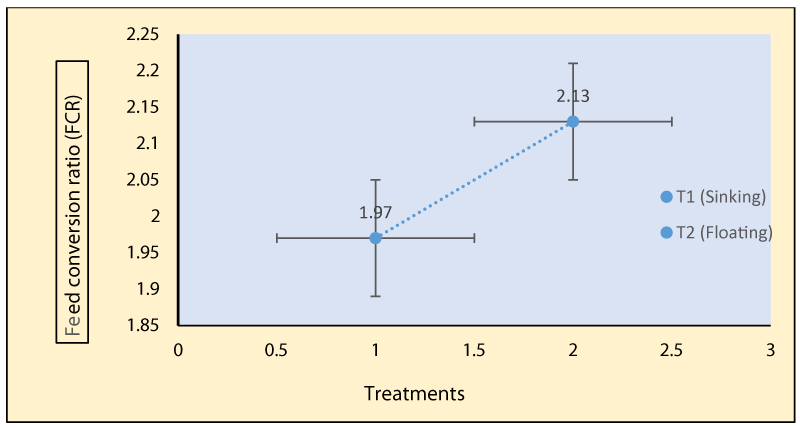
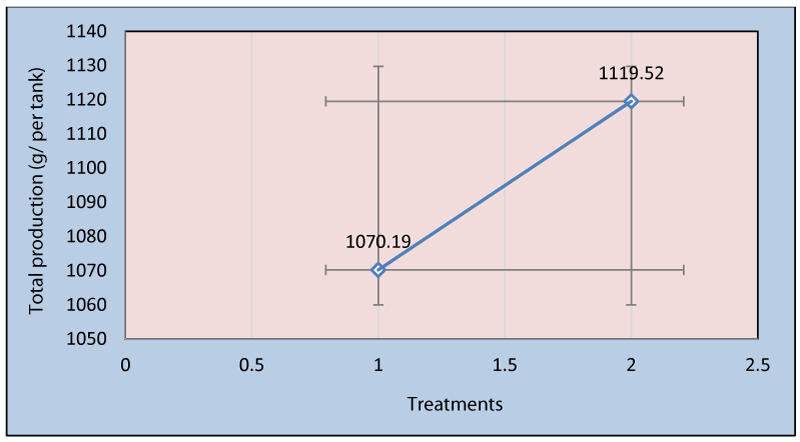
 Save to Mendeley
Save to Mendeley
